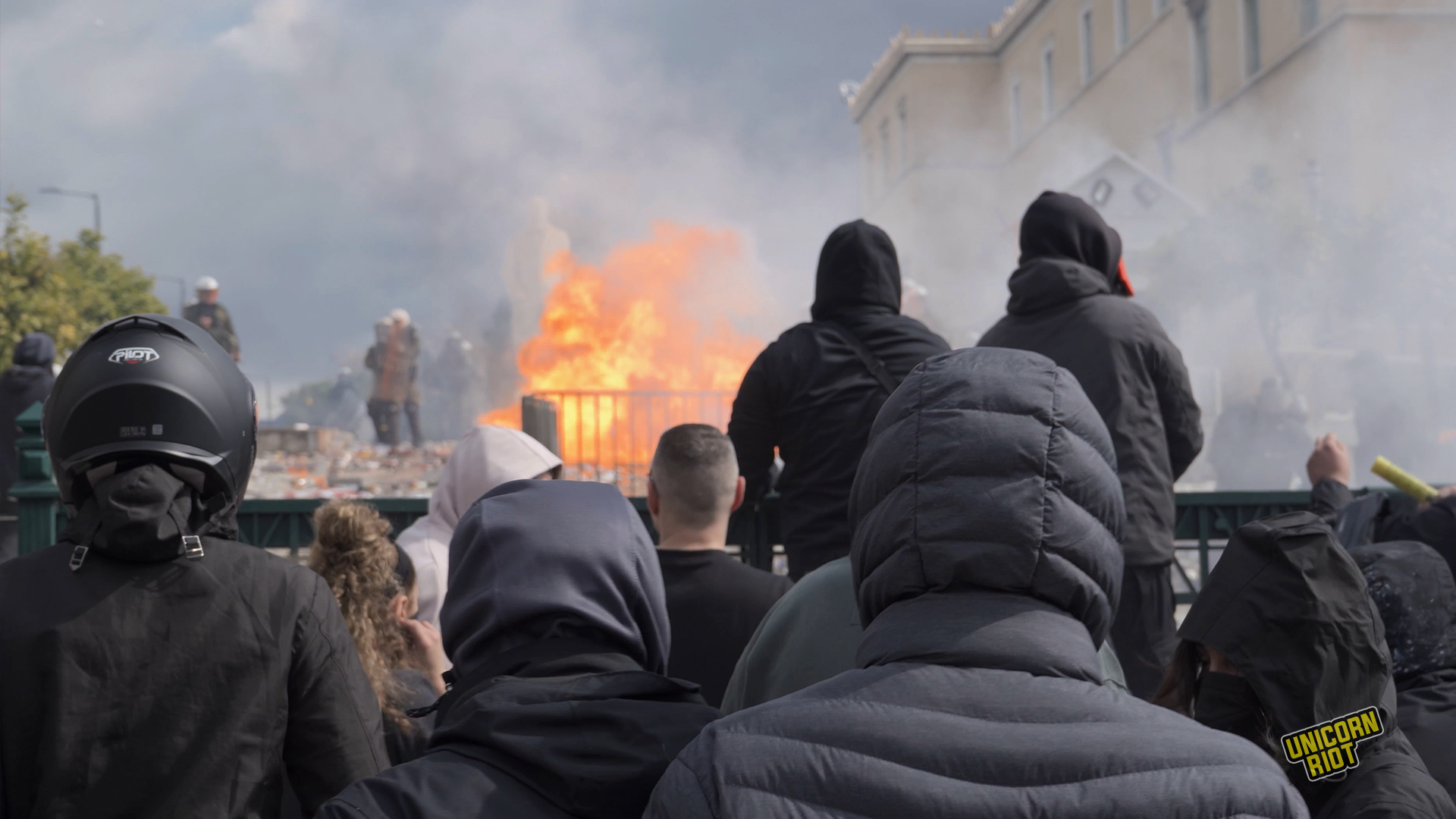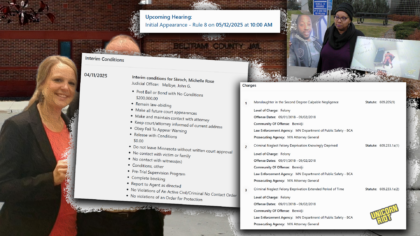‘I have no oxygen’ – Train Crash Leads to Greece’s Biggest Post-War Social Movement
Two years ago the deadliest train crash in Greek history happened. 57 people died after a passenger train collided with a cargo train. The crash occurred at Tempi, a rural area in between Athens and Thessaloniki. Most of the victims were young students traveling after a weekend back to their university in Thessaloniki.
On Feb. 28, 2025, more than a million people protested across the country and hundreds of thousands flooded the streets of Athens, in the largest post-war protest the country has seen. In between volleys of molotov cocktails and tear gas smoke, Unicorn Riot heard from several participants.
As Unicorn Riot has reported, the accident was a result of technical failures and mismanagement of the Greek railway system. Immediately after the crash it was revealed that on the Athens-Thessaloniki route, light signals, remote management, traffic control systems and communication systems were out of service, except on a small part of the line. Because of that, train engineers communicated by radio with the stationmaster in order to move from one station to another. Critics and families of the deceased have asked how it’s even possible that the railway system is in such a bad condition.
At the time, the Greek government tried to blame individuals and present the tragedy as a personal mistake. As Unicorn Riot noted in April 2023 the Greek government did not take into account that the company had been privatized in the context of the Greek debt crisis — the state-owned company TRAINOSE was sold to the Italian state-owned company Ferrovie for just 45 million euros. Since 2019, the company has been financed by the Greek state to the tune of 50 million euros per year for its public service obligations. On July 1, 2022, the company was renamed from TRAINOSE to Hellenic Train.
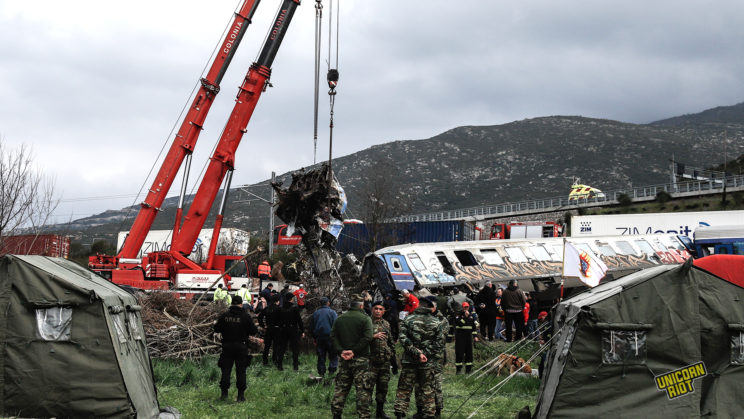
A Movement Was Born
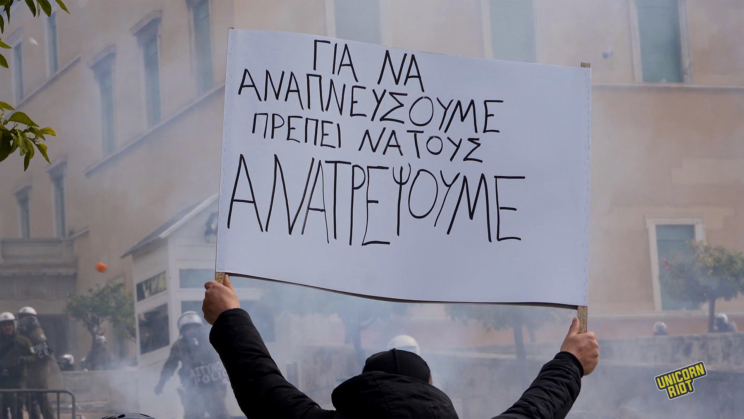
During the last two years, the families of the victims got organized and have been demanding that the Greek government take responsibility for the tragedy. The Greek state chose to try to sit it out, hoping that the topic would resolve itself. Because of this, the families took over the investigations and asked experts to help uncover the reasons behind the accident.
As they sought answers, they formed an association called Tempi2023 and its primary objectives, which they believe can unite all Greeks in a common effort, are: holding those responsible accountable, compensating the victims and never allowing this to happen again.
In March 2024, a study of the governing party of Nea Dimokratia (New Democracy) stated that the accident happened due to human error and the violations of operational protocols by the stationmaster and train drivers. This position was adopted by a parliamentary committee with a majority of parliamentarians of the ruling party.
The decision was criticized by the opposition parties: among them, the study of the left-wing party Syriza criticized the ex-Minister of Transportation Kostas Karamanlis for what they said was criminal negligence. After new audio recordings between the stationmaster and drivers emerged that hinted at a manipulation of previous audio recordings, the social-democratic party PASOK introduced a non-confidence motion against the government. The motion failed to get majority support on March 26, 2024.
In February 2025, PASOK proposed to form a pre-investigative committee to investigate the claim of the victims’ families that the government, specifically vice-minister of civil protection Christos Triantopoulos, gave the instruction to clean up the site of the crash. After the parliamentarian vote of March 4, 2025 passed with 277 over 297 votes, Triantopoulos resigned. This majority could only be reached with votes of Nea Dimokratia, suggesting that the government sacrificed him in order to handle the public scrutiny of its disaster management.
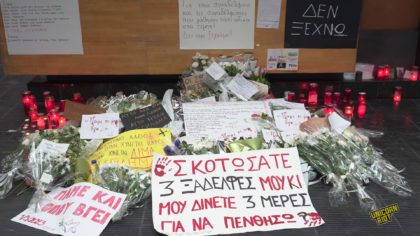
According to the Hellenic Railway Organization of Greece, the reasons for the crash are, on one side, the lack of communication between the stationmaster and driver and on the other, the failure to complete the remote control and signaling system.
The Rail Works Union similarly attributes the disaster not just to a human error, but to the fact that the signaling and remote systems, which could have acted as safety valves to avoid the collision, were not functioning. One month before the crash, the union had warned of the possibility of such a disaster.
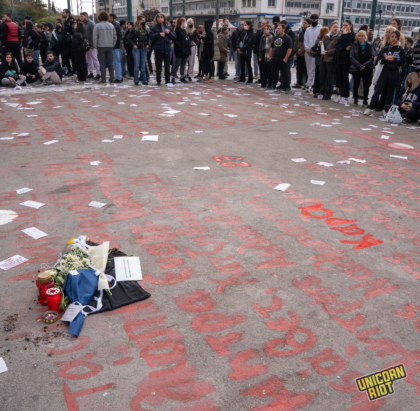
As of now, only the stationmaster has been arrested. On August 1, 2024, he was released because the pre-trial detention period ended. He’s now awaiting his trial. In the aftermath of the crash the government tried to claim that there is no political responsibility for the technical failure of the new telecommand system.
The accusations of the families are still many. They say the government tried to manipulate the case by destroying evidence, that the state controls the judicial procedures and government-friendly media cover for them.
In May 2024, 170 of the relatives sued the Greek Prime Minister Kyriakos Mitsotakis. Due to the publicly perceived poor handling in the aftermath of the train catastrophe, justice and democracy became the second most important issues for Greeks in general, according to the polling institute Prorata. Nearly eight out of 10 people believe that the government has not handled the issue properly.
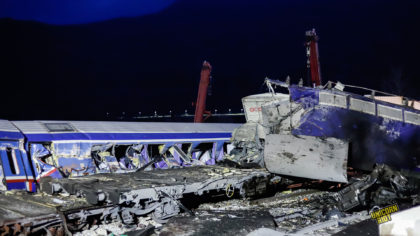
The main new accusation is that the government wanted to cover up the smuggling of illegal chemicals that is being organized in Greece on a large scale.
In January 2025, massive protests took place all over Greece and in many international cities under the slogan, “I have no oxygen.” The slogan and the protest were prompted by audio recordings where a victim of the train disaster called the emergency number and said that she’s not getting oxygen. The victim is Marthi Karystianou and her mother is a prominent opposition figure leading Tempi2023, the relatives’ initiative.
Many Greeks see the recording as evidence that some of the victims did not die because of the crash, but because of the conflagration. This was a massive blow to Mitsotakis because he had denounced those allegations as “nonsense,” though evidence shows otherwise.
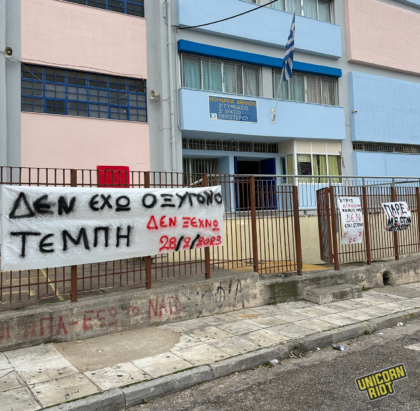
A 178 page investigation (pdf) of the Hellenic Air & Rail Safety Investigation Agency released on February 27 concludes that most of the victims were killed directly by the collision between the two trains and five to seven of them by an explosion immediately afterwards. What exactly caused the fire was “impossible to determine on the basis of the available evidence,” but simulations suggested that “the possible presence of an unknown flammable liquid” could have been involved.
The report also criticizes the conditions of the Greek railway and the lack of investments. Greece spends only a fraction of what European Union countries spend on their railway systems. In particular, the report says that 170,000 euros are spent per kilometer of track in the EU, while in 2020 Greece only spent 20,000 euros per kilometer.
The social movement born from successive publications of misconduct was given further impetus when Prime Minister Mitsotakis decided to appoint Kostas Tasoulas as new president of Greece, elected with a majority in parliament. Tasoulas is known as a devout anti-communist and part of the nationalist current of Nea Dimokratia. He is also known for his clientelism: on the last day of his term as president of the parliament on January 16 he signed subsidies for over a million euros for the Orthodox Church, the local theater and cultural association of the city of Ioannina as well as for a local military museum. Ioannina is the constituency of Tasoulas. But what enraged people even more is that Tasoulas was responsible as president of parliament for burying the Tempi case through omissions.
PASOK and other parties of the opposition claim that Tasoulas is responsible for concealing critical evidence from the parliamentary plenary and accuse him of failing to implement important findings of the investigation. The opposition accuses the government of breaking the tradition of party-political independence of the President of the Republic.
The investigative report was released one day before the anniversary of the crash and an announced general strike.
February 28 General Strike
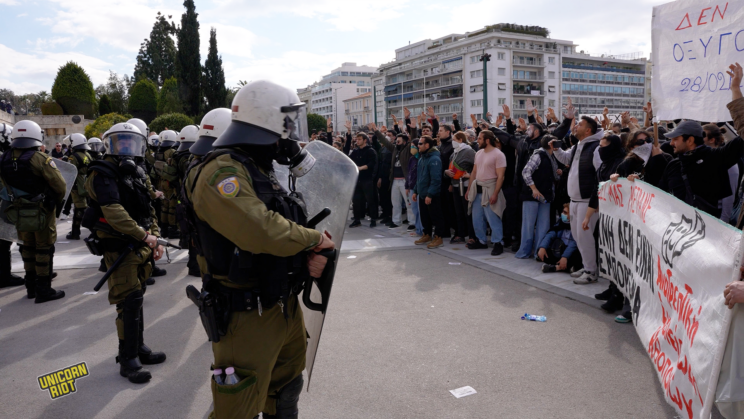
The families and friends of the victims, public and private sector unions, left-wing parties and organizations called for a general strike on February 28, 2025.
The streets were empty in the suburbs of Athens on the morning of the 28th. Traffic was nonexistent, and all the shops were closed for the day. On the way from the Metro Station to the city center you could see people of all ages. The metros were full in every direction. After arriving in the city center it was nearly impossible to get through the crowds that surrounded the many streets leading to Syntagma Square where the Parliament building stands.
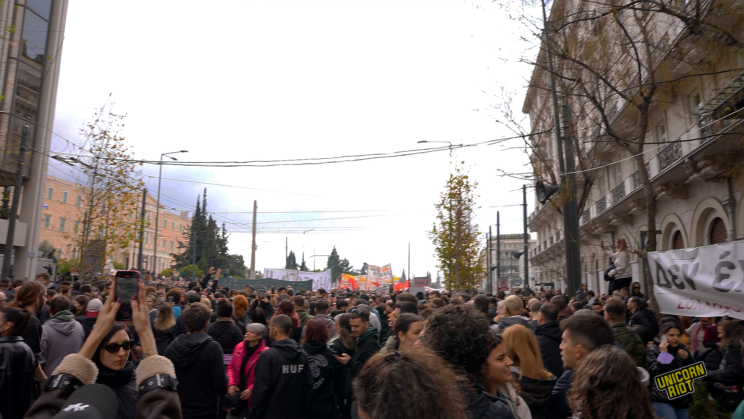
On this day, in over 400 places worldwide demonstrations took place — from New York to Melbourne, from Buenos Aires to Oslo.
Two years after the deadly train crash, the heartbeat of a worldwide movement pounded in Athens, where over half of a million protesters came together — according to a crowd-counting app developed by the NGO iMEdD, about 427,314 people gathered in Syntagma Square alone.
In Thessaloniki, more than 200,000 people were on the streets. All over Greece, more than one million people protested. Many analysts say it was one of the biggest gatherings in post-war Greece.
At 12:58 p.m. the first molotov cocktails were thrown by protesters at the direction of the parliament. The police used the situation to disperse the crowd that had filled the Square in all directions by using tear-gas, stun grenades and batons.
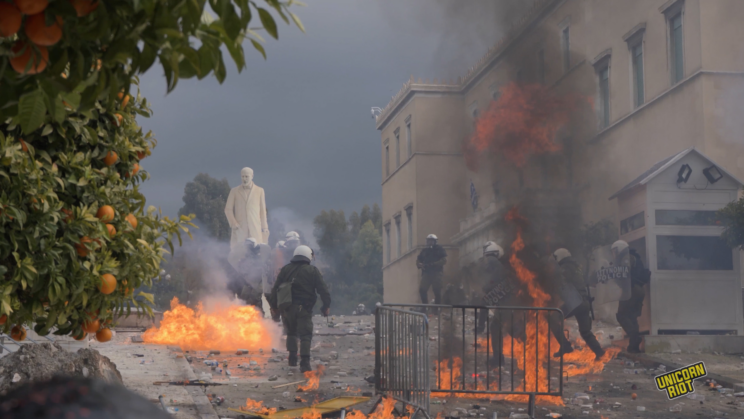
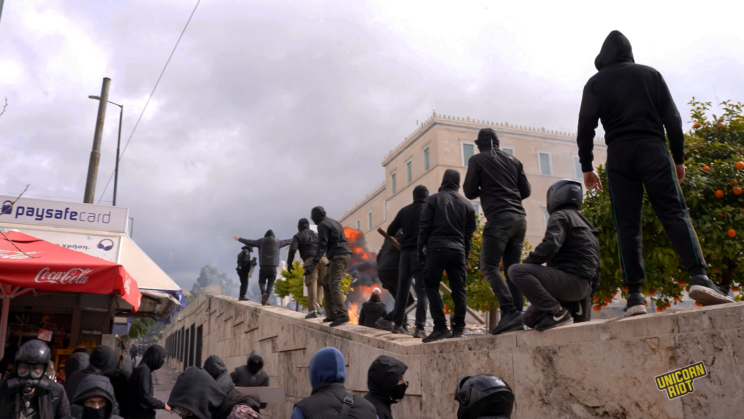
Later, a water cannon vehicle was used to disperse a peaceful young crowd chanting in front of the parliament. The police watchdog Copwatch.gr received dozens of videos that document police violence during and after the gatherings, especially in Athens and Thessaloniki.
Many youth participated in the gathering in Athens — many thinking that it could have been them who died on the train in the place of the victims.
Stefania Danopoulou, a student, said to Unicorn Riot, “We want to say with our voices that [the victims of the crash] could have been us. My mom could be crying over me because someone didn’t take care of the railroad.”
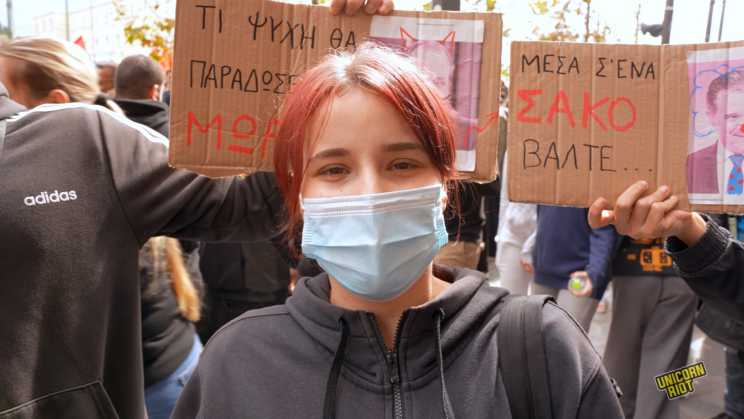
Danopoulou also pointed out that the train crash is not a singular problem, but reflects a much bigger infrastructure problem: “Someone didn’t take care of the railroad. Tomorrow it’s going to be a street. Something else is going to collapse. A building? No one knows.”
For Asimia, a teacher, it is clear that a crime had been covered up, “not just once, but many times.” The situation reminds her of the time just before the Polytechnic uprising against the dictatorship in 1973. “There was unrest, public anger and then the riots erupted.” She doesn’t think the movement will die down, especially with financial difficulties in the country adding to the grievances of infrastructure. “We are all struggling to make ends meet,” she said.
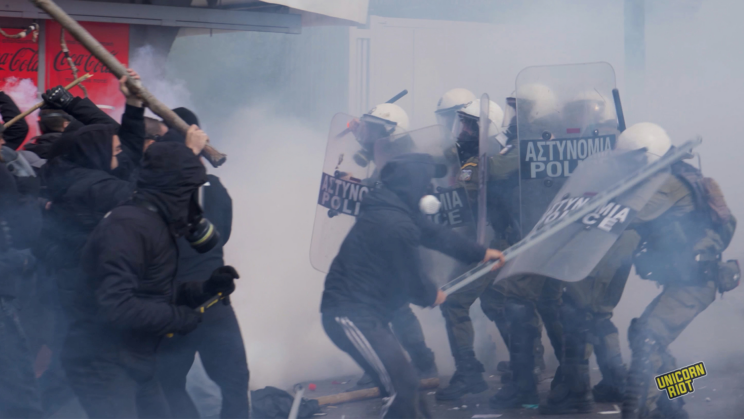
The Reaction of the Government
Mitsotakis was in Abu Dhabi during the general strike. After he came back, the government was forced to react politically. The polls for Nea Dimokratia have fallen dramatically to under 30%, in comparison with the last election result of 40% in June 2023. As always when the Greek government is in crisis they do a government reshuffle — the last option before calling new elections. Mitsotakis appointed new ministers for finance, education, infrastructure and environment. He also changed some positions of ministers who were already inside the government to new positions.
Two of his moves reflect a government shift to the right. Konstantinos Kyranakis, former vice-minister for digitalization is now vice-minister for transportation, a crucial position connected to the train crash. Kyranakis is a young up-and-coming politician who is known as a right-wing hard liner.
The other important appointment is Makis Voridis, who was shifted to the ministry of migration. During his student days, Voridis was caught on camera hunting down left-wing students with an axe. At this time, he became the leader of the youth wing of EPEN, a fascist party founded by former dictator Colonel Georgios Papadopoulos while he was imprisoned. He thus campaigned for the release of Papadopoulos and the return of the king. His predecessor as youth leader was none other than the convicted leader of the banned neo-Nazi party, Golden Dawn, Nikos Michaloliakos.
In 1994, Voridis founded a far-right splinter party with the pithy name “Greek Front” — based on the far-right Front National from France. He maintained close ties with its leader, Jean-Marie Le Pen. After years of unsuccessful efforts, he joined the LAOS (Popular Orthodox Alarm) party, the most successful nationalist party at the time in 2005. He then became a member of the Greek Parliament and was named Infrastructure Minister in 2011 in the midst of the Greek national debt crisis. When LAOS was kicked out of parliament, he switched to the right-wing conservative Nea Dimokratia and cemented the far-right current inside the party.
Because of the current polls many analysts speculate about new elections coming soon. Unions have announced a general strike for April 9 on the topic of labor and high cost of living, and have linked their protest to the train crash. Meanwhile, the relatives of the victims are waiting to see if the government continues its right-wing turn and its disregard for investigations of the fatal disaster.
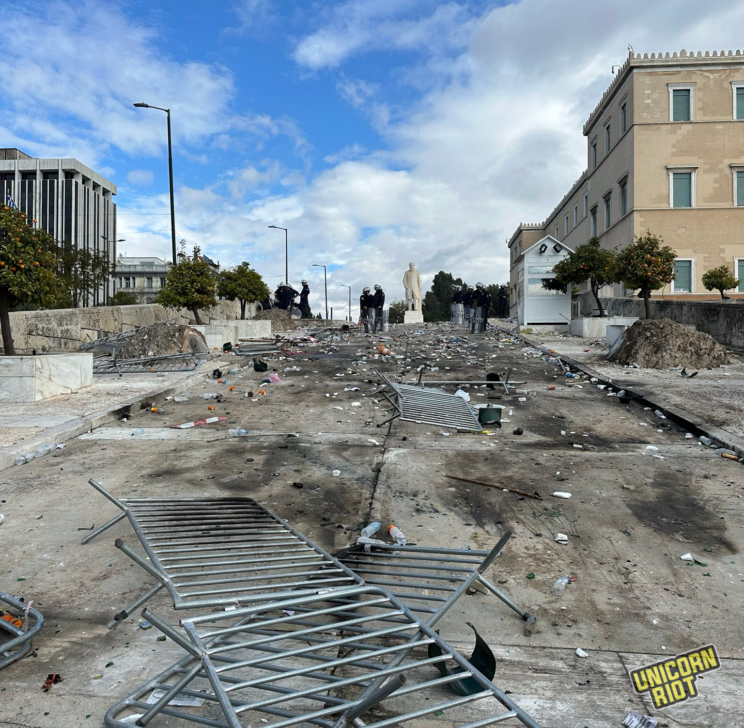

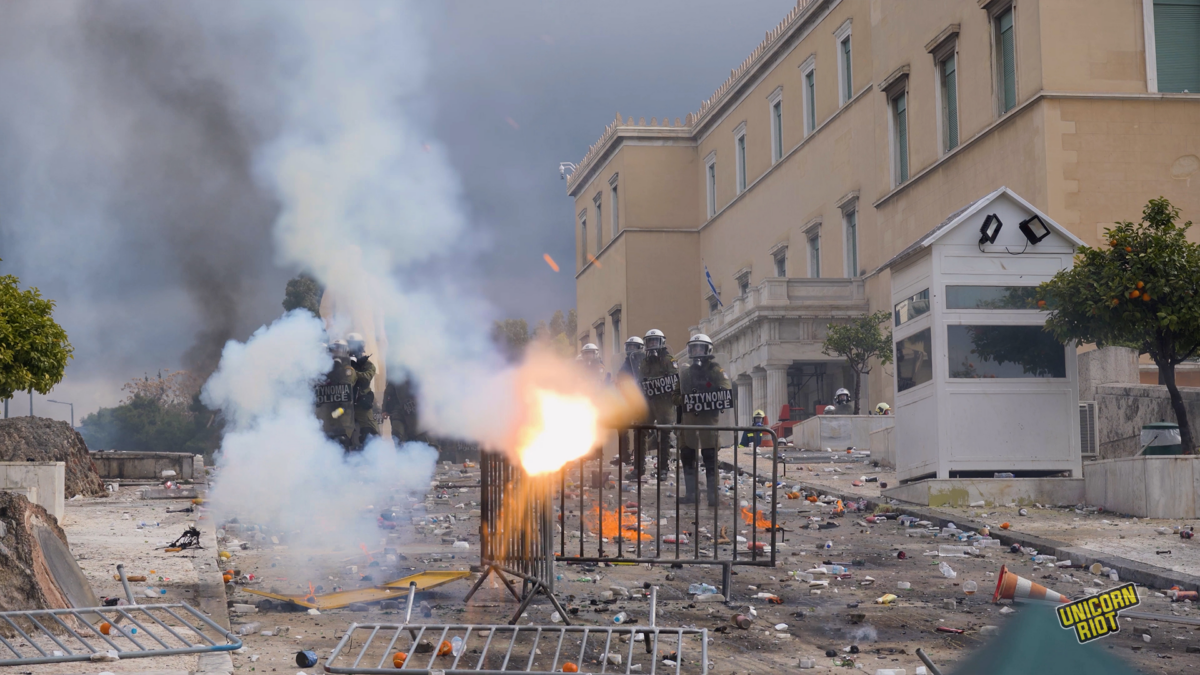
‘It was a crime, not an accident!’ – Deadly Greek Train Crash Sparks Justice Movement [2023]
Photos in this report were contributed by Yegor Halva, John Malamatinas, and Alex Gasteratos.
Follow us on X (aka Twitter), Facebook, YouTube, Vimeo, Instagram, Mastodon, Threads, BlueSky and Patreon.

